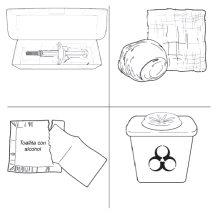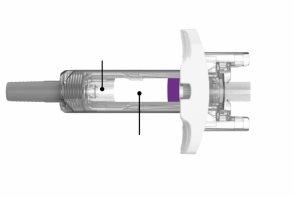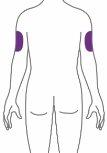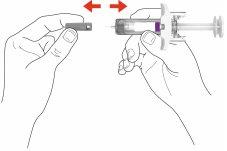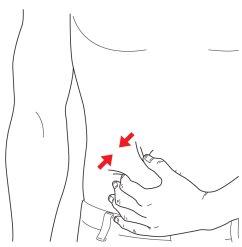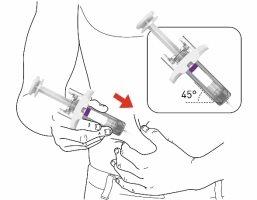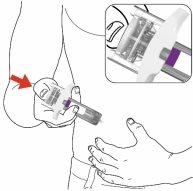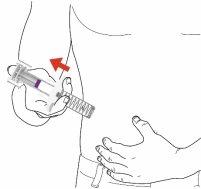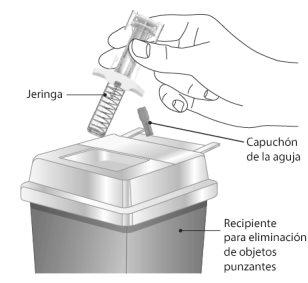
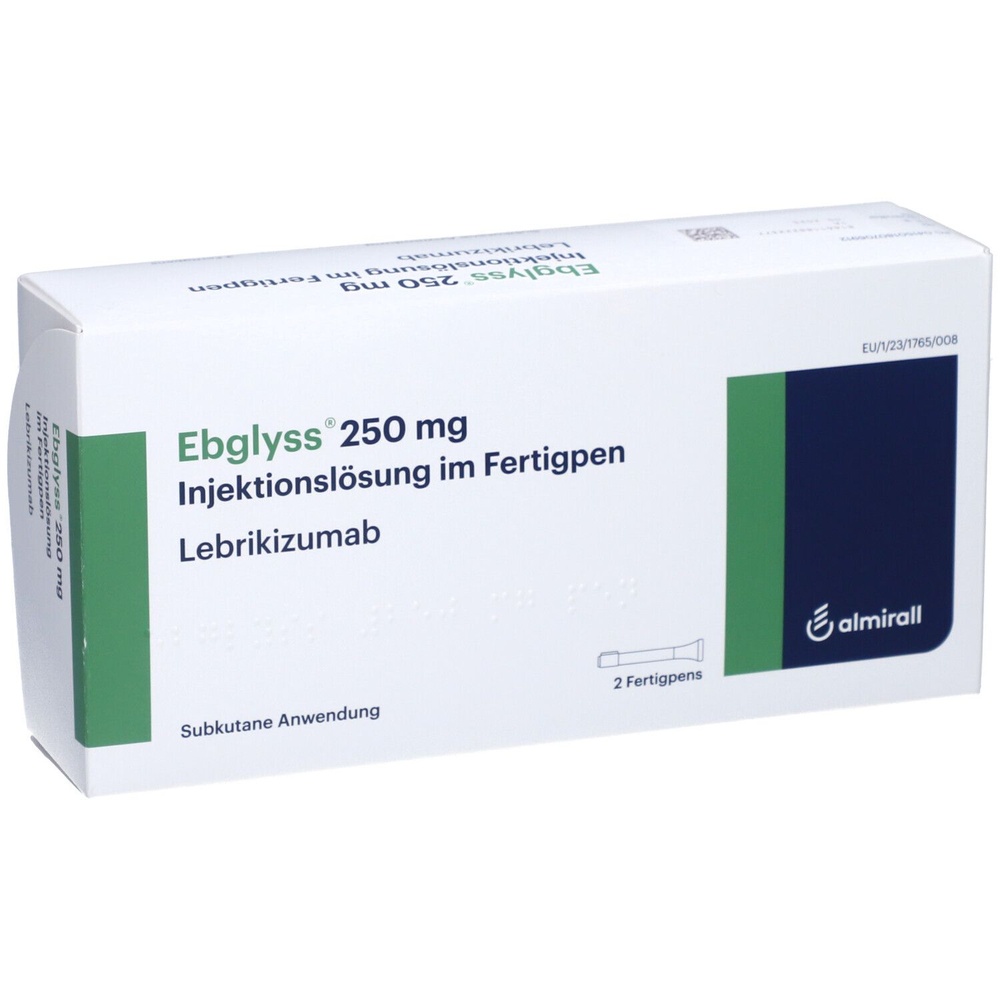
EBGLYSS 250 MG PRE-FILLED SYRINGE SOLUTION FOR INJECTION


How to use EBGLYSS 250 MG PRE-FILLED SYRINGE SOLUTION FOR INJECTION
Introduction
Package Leaflet: Information for the User
Ebglyss 250mg solution for injection in pre-filled syringe
lebrikizumab
This medicinal product is subject to additional monitoring, which will allow for quick identification of new safety information. You can help by reporting any side effects you may get. The last section of the leaflet includes information on how to report side effects.
Read all of this leaflet carefully before you start using this medicine, because it contains important information for you.
- Keep this leaflet, you may need to read it again.
- If you have any further questions, ask your doctor, pharmacist, or nurse.
- This medicine has been prescribed for you only. Do not pass it on to others. It may harm them, even if their signs of illness are the same as yours.
- If you get any side effects, talk to your doctor, pharmacist, or nurse. This includes any possible side effects not listed in this leaflet. See section 4.
Contents of the pack
- What is Ebglyss and what is it used for
- What you need to know before you use Ebglyss
- How to use Ebglyss
- Possible side effects
- Storage of Ebglyss
- Contents of the pack and other information
Instructions for use
1. What is Ebglyss and what is it used for
Ebglyss contains the active substance lebrikizumab.
Ebglyss is used to treat adults and adolescents from 12 years of age with moderate to severe atopic dermatitis (also known as atopic eczema) who may be candidates for systemic therapy (medicine given by mouth or by injection).
Ebglyss can be given alone or in combination with medicines for eczema that are applied to the skin.
Lebrikizumab is a monoclonal antibody (a type of protein) that blocks the action of another protein called interleukin 13. Interleukin 13 plays an important role in the occurrence of symptoms of atopic dermatitis. By blocking interleukin 13, Ebglyss can improve your atopic dermatitis and reduce the itching and skin pain associated with it.
2. What you need to know before you use Ebglyss
Do not use Ebglyss
- if you are allergic to lebrikizumab or any of the other ingredients of this medicine (listed in section 6).
If you think you may be allergic or are unsure, talk to your doctor, pharmacist, or nurse before using Ebglyss.
Warnings and precautions
Talk to your doctor, pharmacist, or nurse before starting Ebglyss.
Each time you get a new pack of Ebglyss, it is important that you note the batch number (found on the pack after “Batch”) and that you keep this information in a safe place.
Allergic reactions
Very rarely, this medicine may cause allergic reactions (hypersensitivity). These reactions may occur soon after starting Ebglyss, but may also occur later. If you notice that you have symptoms of an allergic reaction, you must stop using the medicine and contact your doctor or get medical attention immediately. The signs of an allergic reaction include:
- breathing problems
- swelling of the face, mouth, and tongue
- fainting
- dizziness
- feeling faint (due to a drop in blood pressure)
- hives, itching, and skin rash.
Eye problems
Talk to your doctor if you notice any eye problems, such as redness and discomfort in the eye, eye pain, or changes in vision.
Vaccines
Talk to your doctor about your current vaccination program. See the section “Other medicines and Ebglyss”.
Children and adolescents
This medicine must not be used in children with atopic dermatitis under 12 years of age or in adolescents from 12 to 17 years of age and weighing less than 40 kg, as it has not been studied in this age group.
Other medicines and Ebglyss
Tell your doctor or pharmacist if:
- you are using, have recently used, or might use any other medicines;
- you have recently been vaccinated or are planning to be vaccinated. You must not receive certain types of vaccines (live vaccines) during treatment with Ebglyss.
Pregnancy, breast-feeding, and fertility
If you are pregnant or breast-feeding, think you may be pregnant, or are planning to have a baby, ask your doctor or pharmacist for advice before using this medicine.
The effects of this medicine in pregnant women are not known; it is best to avoid using Ebglyss during pregnancy unless your doctor advises you to use it.
It is not known whether lebrikizumab passes into breast milk. If you are breast-feeding or planning to breast-feed, talk to your doctor before using this medicine. You and your doctor must decide whether to breast-feed or use Ebglyss. You should not do both.
Driving and using machines
Ebglyss is unlikely to affect your ability to drive or use machines.
3. How to use Ebglyss
Follow exactly the administration instructions of this medicine given by your doctor or pharmacist. If you are unsure, talk to your doctor or pharmacist again.
How much Ebglyss to use and for how long
Your doctor will decide how much Ebglyss you need and for how long you will use it.
The recommended dose is:
- Two initial injections of 250 mg of lebrikizumab each (500 mg in total) at week 0 and week 2.
- One injection of 250 mg every two weeks from week 4 to week 16.
Depending on how you respond to the medicine, your doctor may decide to stop giving you the medicine or continue giving you one injection of 250 mg every two weeks up to week 24.
- One injection of 250 mg every four weeks from week 16 onwards (maintenance dose).
Ebglyss is given by subcutaneous injection (under the skin) in the thigh or abdomen, except in the 5 cm around the navel. If someone else gives you the injection, it can also be given in the upper arm. You and your doctor or nurse will decide if you can inject Ebglyss yourself.
It is recommended that you alternate the injection site with each injection. Ebglyss must not be injected into sensitive skin areas, damaged skin, or skin with bruises or scars, or into skin areas affected by atopic dermatitis or other skin lesions. The initial dose of 500 mg should be given in two consecutive injections of 250 mg in different injection sites.
It is important that you do not try to give yourself the injection until your doctor or nurse has taught you how to do it. It is also possible that a caregiver who has learned to do it well may give you the Ebglyss injections. In the case of adolescents, 12 years of age or older, it is recommended that Ebglyss be administered by an adult or under the supervision of an adult.
The pre-filled syringe must not be shaken.
Read the “Instructions for use” of the pre-filled syringe carefully before administering Ebglyss.
If you use more Ebglyss than you should
If you use more Ebglyss than your doctor prescribed or if you inject the dose earlier than planned, talk to your doctor, pharmacist, or nurse.
If you forget to use Ebglyss
If you forget to inject a dose of Ebglyss, talk to your doctor, pharmacist, or nurse.
If you forgot to inject Ebglyss when you usually do, inject the dose when you remember. The next dose should be injected as usual on the scheduled day.
If you stop using Ebglyss
Do not stop using Ebglyss without talking to your doctor first.
If you have any further questions on the use of this medicine, ask your doctor, pharmacist, or nurse.
4. Possible side effects
Like all medicines, this medicine can cause side effects, although not everybody gets them.
Common(may affect up to 1 in 10 people)
- Redness and discomfort in the eye (conjunctivitis)
- Inflammation of the eye due to an allergic reaction (allergic conjunctivitis)
- Dry eye
- Reactions at the injection site
Uncommon(may affect up to 1 in 100 people)
- Herpes zoster (shingles), a painful rash with blisters on one part of the body
- Increased eosinophils (a type of white blood cell, eosinophilia)
- Inflammation of the cornea (the transparent layer covering the front of the eye, keratitis)
- Itching, redness, and swelling of the eyelids (blepharitis)
Reporting of side effects
If you get any side effects, talk to your doctor, pharmacist, or nurse. This includes any possible side effects not listed in this leaflet. You can also report side effects directly via the Spanish Medicines Agency's website: www.notificaRAM.es. By reporting side effects, you can help provide more information on the safety of this medicine.
5. Storage of Ebglyss
Keep this medicine out of the sight and reach of children.
Do not use this medicine after the expiry date which is stated on the label after EXP. The expiry date is the last day of the month shown.
Store in a refrigerator (2°C to 8°C). Do not freeze.
Keep the pre-filled syringe in the outer carton in order to protect from light.
Do not use this medicine if you notice that the solution is cloudy, has changed color, or contains visible particles. Before use, remove the carton from the refrigerator, remove the pre-filled syringe from the carton, and wait 45 minutes to reach room temperature. After removal from the refrigerator, Ebglyss should be stored below 30°C and used within 7 days or discarded. Once stored at room temperature, it must not be refrigerated again. You can write the date you removed it from the refrigerator on the carton.
This medicine is for single use only.
Medicines should not be disposed of via wastewater or household waste. Ask your pharmacist how to dispose of medicines no longer required. This will help protect the environment.
6. Container Contents and Additional Information
Ebglyss Composition
- The active ingredient is lebrikizumab. Each prefilled syringe contains 250 mg of lebrikizumab in 2 ml of solution (125 mg/ml).
- The other components are histidine, glacial acetic acid (E260), sucrose, polysorbate 20 (E432), and water for injectable preparations.
Product Appearance and Container Contents
Ebglyss is a sterile injectable solution that is transparent to opalescent, colorless to slightly yellow or slightly brown, and free of visible particles. It is supplied in cartons containing a single-dose glass prefilled syringe or 2 single-dose prefilled syringes, and in multiple packs containing 3 single-dose prefilled syringes (3 packs of 1), 4 single-dose prefilled syringes (2 packs of 2), 5 single-dose prefilled syringes (5 packs of 1), or 6 single-dose prefilled syringes (3 packs of 2).
Only some pack sizes may be marketed.
Marketing Authorization Holder and Manufacturer
Almirall, S.A.
Ronda General Mitre, 151
08022 Barcelona
Spain
You can request more information about this medicinal product by contacting the local representative of the marketing authorization holder:
Spain
Almirall, S.A.
Tel: +34 93 291 30 00
Date of Last Revision of this Leaflet: 11/2023.
Detailed information on this medicinal product is available on the European Medicines Agency website: http://www.ema.europa.eu
Instructions for Use
Read these "Instructions for Use" before administering this medicinal product and carefully follow all the step-by-step instructions.
Important Information about the Ebglyss Prefilled Syringe with Needle Safety System:
You should not inject Ebglyss yourself or have someone else inject it for you until your doctor has explained how to do it.If you are unsure, contact your doctor.
During Use of the Ebglyss Prefilled Syringe
- Consult your doctor about how often injections of this medicinal product will be administered.
- If you have visual problems, do not use the Ebglyss prefilled syringe without the help of a caregiver.
- To reduce the risk of accidental needle pricks, each prefilled syringe has a needle safety system that automatically activates to cover the needle after injection.
- Discard (throw away) the used Ebglyss single-dose prefilled syringe immediately after use.
- Do not use the Ebglyss prefilled syringe if it has been dropped onto a hard surface or is damaged.
- Do not use the Ebglyss prefilled syringe if the needle cap is missing or not firmly attached.
- Do not touch the plunger head until you are ready for injection.
- Do not remove air bubbles from the Ebglyss prefilled syringe.
- Do not pull the plunger head at any time.
- Do not inject through clothing.
- Do not remove the needle cap until just before you are ready to administer the injection.
- Do not reuse a single-dose Ebglyss prefilled syringe.
Parts of the Ebglyss Prefilled Syringe with Needle Safety System
Before Use
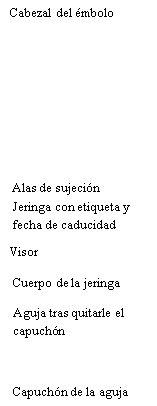

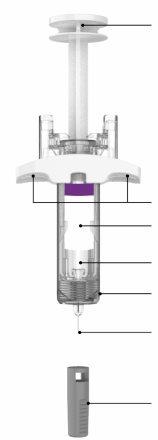
After Use
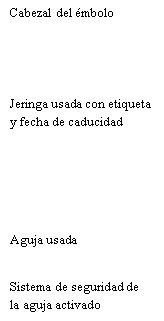
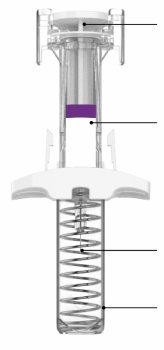
Preparing Ebglyss for Injection | |
Prepare the Supplies
| Make sure you have the following:
*Materials not included with the medicinal product. |
Remove the Prefilled Syringe from the Carton
| Remove the Ebglyss prefilled syringe from the carton by holding it in the middle of the syringe body. Leave the needle cap on until you are ready for injection. |
Inspect the Prefilled Syringe
| When you receive the Ebglyss prefilled syringes, always check that you have the correct medicinal product and dose, and visually inspect the prefilled syringe. Note: You can gently turn the plunger head to see the syringe label. The label should read "Ebglyss". Do not use the Ebglyss prefilled syringeif the expiration date has passed. Do not use the Ebglyss prefilled syringeif it is damaged. Look at the medicinal product through the window of the Ebglyss prefilled syringe. The liquid should be transparent, colorless to slightly yellow or slightly brown. Note: It is normal to have some air bubbles. Do not use the Ebglyss prefilled syringe if the liquid has changed color or is cloudy, contains flakes or visible particles, the syringe shows signs of damage or has been dropped, or the medicinal product is frozen. |
Let it Reach Room Temperature | Place the Ebglyss prefilled syringe on a flat surface and wait at least 45 minutes for it to reach room temperature naturally. Do not heat the Ebglyss prefilled syringein the microwave or with hot water. Do not place the Ebglyss prefilled syringe under direct sunlight. |
| |
Select the Injection Site
You or another person can inject into these areas.
Another person should inject you in this area. |
Do notinject into areas of sensitive skin, with bruises, redness, hardness, or scarring, or into areas of skin affected by atopic dermatitis or other skin lesions. |
Prepare the Skin | Wash your hands well with water and soap. Clean the injection site with an alcohol swab. Let the injection site dry before injection. Do not touch the injection site or blow on it before injection. |
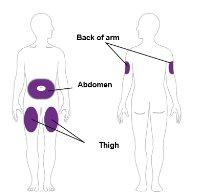
Ebglyss Injection | ||
1 | Remove the Needle Cap | |
Hold the Ebglyss prefilled syringe by the middle of the body with the needle pointing away from you and pull off the needle cap. Do not replace the needle cap. Do not touch the needle. Inject the medicinal product immediately after removing the needle cap. |
| |
2 | Pinch the Injection Site | |
Gently pinch a skin fold at the injection site (the thigh or stomach, except for the 5 cm around the navel, or the outer aspect of the arm, if your caregiver is injecting you). |
| |
3 | Insert the Needle | |
Insert the needle completely into the skin fold at an angle of about 45°. |
| |
4 | Push the Plunger | |
Release the skin fold gently with the needle still in place. Push the plunger head slowly and firmly until it stops and the syringe is empty. Note: It is normal to feel some resistance. |
| |
5 | Release and Remove the Needle | |
Lift your thumb to release the plunger until the needle is covered by the safety system, and then remove the syringe from the injection site. If it bleeds, press the injection site gently with a cotton ball or gauze. Do not replace the needle cap. Do not rub the skin surface after injection. |
| |
Dispose of the Syringe Safely | |
Place the used Ebglyss prefilled syringe and the needle cap in a container for sharp objects immediately after use. | |
Do not dispose of (throw away) Ebglyss prefilled syringes or needle caps in household waste. If you do not have a container for sharp objects, you can use a household container that:
|
|
When the container for sharp objects is almost full, follow local guidelines for its proper disposal. There may be national laws regarding the disposal of used needles and syringes. For more information about safe disposal of sharp objects, ask your doctor about the options available in your area. Do notrecycle the used container for sharp objects. |
Read the complete leaflet of the prefilled syringe before using Ebglyss.
- Country of registration
- Active substance
- Prescription requiredYes
- Manufacturer
- This information is for reference only and does not constitute medical advice. Always consult a licensed doctor before taking any medication. Oladoctor is not responsible for medical decisions based on this content.
- Alternatives to EBGLYSS 250 MG PRE-FILLED SYRINGE SOLUTION FOR INJECTIONDosage form: INJECTABLE, 250 mgActive substance: lebrikizumabManufacturer: Almirall S.A.Prescription requiredDosage form: INJECTABLE, 1 mlActive substance: tralokinumabManufacturer: Leo Pharma A/SPrescription requiredDosage form: INJECTABLE, 300 mgActive substance: tralokinumabManufacturer: Leo Pharma A/SPrescription required
Online doctors for EBGLYSS 250 MG PRE-FILLED SYRINGE SOLUTION FOR INJECTION
Discuss dosage, side effects, interactions, contraindications, and prescription renewal for EBGLYSS 250 MG PRE-FILLED SYRINGE SOLUTION FOR INJECTION – subject to medical assessment and local rules.



